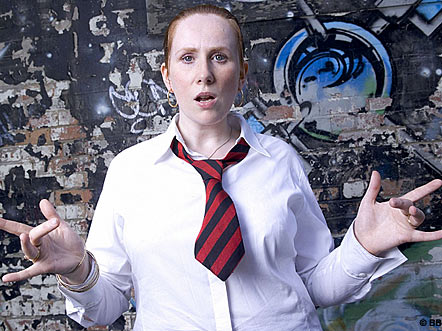Whether it’s robotic call centre attendents or sulky staff, John Dell’Armi takes a look at customer experience and advises on how L&D can benefit from boosting theirs.
An emotive issue
What is customer experience? According to Colin Shaw it’s the next competitive battlefield, some would argue that’s it’s already here. Shaw defines it as ‘a blend of a company’s physical performance (how they do something) and the emotions evoked, intuitively measured against customer expectations across all moment of contact.’
Let’s break that down further. ‘Emotions evoked’ suggests that a great customer experience is about how it makes you feel. It’s about stimulating customers’ emotions. So customer experience is all about emotions. While ‘Measured against customer expectations’ refers to the fact that as customers, when we interact with an organisation we enter into that exchange with some expectations of what we will get, how we will be treated. If the customer experience blows us away that’s a WOW (to use
Chris Daffy’s terminology) or if it leaves us frustrated, angry or disappointed that’s an OUCH! Finally, across ‘all moments of contact’, irrespective of how we interact with that organisation and no matter what distribution channel we enter by, that experience should be the same and reflect the brand values that the organisation aspires to. Consider these questions: How many companies truly measure customer emotions? How many companies have actually sat down and thought about the emotions they want to engender in their customers?
So why is it so important? If you are in a service business, you are there to serve the customer. If all your competitors have got all the functional things sorted out, there is nowhere else for you to go. The only way you can differentiate yourself is by ensuring you evoke positive emotional connections in your customers through providing great customer experiences. At the risk of stating the obvious, if you look after your customers, they will look after your bottom line for you. After all, it’s not the accounts department that pays your wages it’s your customers! So never assume customers are satisfied and feeling loyal, in fact, the definition of a loyal customer is someone who hasn’t found a better alternative, as the banks found out in the UK when First Direct came along.
The 64million dollar question that any customer should be asked is: Would you recommend xyz co to a friend? If the answer is yes, you’re on to a winner and you may have created a customer advocate. If the answer is no then at best you’ve created a dissatisfied customer, at worst a terrorist who tells all their friends and millions of others thanks to the advent of the internet.
If you want to know more about how to measure the ‘recommend to a friend’ question, look at
www.ultimatequestion.com or
www.netpromoter.com. It makes economic sense to look after your customers as research indicates that it is five to ten times more costly to acquire a new customer than to keep an existing one.
Tackle the issue from all sides
So what can organisations do? Firstly don’t expect that your front line staff will always get you out of jail. No matter how customer-focused they are, they can’t paper over the cracks of a poorly-designed customer experience. Here are some steps that organisations can take:
- Hire for attitude. Hire people with service in their soul. The technical stuff can be fixed but a sullen and morose employee who doesn’t want to deal with customers and portrays that lack of engagement is a lot harder to turn round.
- Treat your staff well because research by Harvard shows that happy staff equals excellent service which equals happy customers which equals healthy profits.
- Understand the customer experience you are giving your customers. Colin Shaw in “The DNA of Customer Experience” tells the story of the daughter of a car insurer’s CEO who was involved in a car crash who rang her father because it wasn’t clear to her what to select from the insurer’s telephone IVR (interactive voice response) choices. Would you be able to select the right option from a confusing array if you were distraught as a result of an accident? Intuit have a follow the customer home programme, where they sit with the customer to understand how he/she interacts with their products and what their problems are.
- Make sure that your IT systems work for the customer experience rather than against it.
- Make sure that you are measuring the right things. It’s not about how quickly you deal with the customer it’s about how competently and effectively you deal with them and how they go away feeling from that moment of truth.
- Don’t just ask your customers if your staff were courteous and polite. Give customers the opportunity to feedback to you.
- See complaints as a massive opportunity to understand and improve the customer experience, welcome them. They are also a fantastic opportunity to recover the customer.
- Make sure that the organisation offers a joined-up customer experience particularly where the customer journey crosses a number of organisational silos.
In the financial services industry the
FSA launched an initiative called ‘Treating Customers Fairly’. Surely the regulator didn’t need to intervene? Doesn’t it makes sound economic sense to treat your customers well? Why can’t the CEOs see this? But the finance sector is not alone in this failing, I’m sure we can all think of examples of other industries which continually disappoint.
I’ll finish with one quote that for me encapsulates the power of customers and why organisations should look after them? “There is only one boss. The customer. And he can fire everybody in the company from the chairman down, simply by spending his money somewhere else,” Sam Walton (Wal Mart).
Whether it's robotic call centre attendents or sulky staff, John Dell’Armi takes a look at customer experience and advises on how L&D can benefit from boosting theirs.
An emotive issue
What is customer experience? According to Colin Shaw it’s the next competitive battlefield, some would argue that’s it’s already here. Shaw defines it as 'a blend of a company’s physical performance (how they do something) and the emotions evoked, intuitively measured against customer expectations across all moment of contact.'
Let’s break that down further. 'Emotions evoked' suggests that a great customer experience is about how it makes you feel. It’s about stimulating customers’ emotions. So customer experience is all about emotions. While 'Measured against customer expectations' refers to the fact that as customers, when we interact with an organisation we enter into that exchange with some expectations of what we will get, how we will be treated. If the customer experience blows us away that’s a WOW (to use
Chris Daffy’s terminology) or if it leaves us frustrated, angry or disappointed that’s an OUCH! Finally, across 'all moments of contact', irrespective of how we interact with that organisation and no matter what distribution channel we enter by, that experience should be the same and reflect the brand values that the organisation aspires to. Consider these questions: How many companies truly measure customer emotions? How many companies have actually sat down and thought about the emotions they want to engender in their customers?
So why is it so important? If you are in a service business, you are there to serve the customer. If all your competitors have got all the functional things sorted out, there is nowhere else for you to go. The only way you can differentiate yourself is by ensuring you evoke positive emotional connections in your customers through providing great customer experiences. At the risk of stating the obvious, if you look after your customers, they will look after your bottom line for you. After all, it’s not the accounts department that pays your wages it’s your customers! So never assume customers are satisfied and feeling loyal, in fact, the definition of a loyal customer is someone who hasn’t found a better alternative, as the banks found out in the UK when First Direct came along.
The 64million dollar question that any customer should be asked is: Would you recommend xyz co to a friend? If the answer is yes, you’re on to a winner and you may have created a customer advocate. If the answer is no then at best you’ve created a dissatisfied customer, at worst a terrorist who tells all their friends and millions of others thanks to the advent of the internet.
If you want to know more about how to measure the 'recommend to a friend' question, look at
www.ultimatequestion.com or
www.netpromoter.com. It makes economic sense to look after your customers as research indicates that it is five to ten times more costly to acquire a new customer than to keep an existing one.
Tackle the issue from all sides
So what can organisations do? Firstly don’t expect that your front line staff will always get you out of jail. No matter how customer-focused they are, they can’t paper over the cracks of a poorly-designed customer experience. Here are some steps that organisations can take:
- Hire for attitude. Hire people with service in their soul. The technical stuff can be fixed but a sullen and morose employee who doesn’t want to deal with customers and portrays that lack of engagement is a lot harder to turn round.
- Treat your staff well because research by Harvard shows that happy staff equals excellent service which equals happy customers which equals healthy profits.
- Understand the customer experience you are giving your customers. Colin Shaw in “The DNA of Customer Experience” tells the story of the daughter of a car insurer’s CEO who was involved in a car crash who rang her father because it wasn’t clear to her what to select from the insurer's telephone IVR (interactive voice response) choices. Would you be able to select the right option from a confusing array if you were distraught as a result of an accident? Intuit have a follow the customer home programme, where they sit with the customer to understand how he/she interacts with their products and what their problems are.
- Make sure that your IT systems work for the customer experience rather than against it.
- Make sure that you are measuring the right things. It’s not about how quickly you deal with the customer it’s about how competently and effectively you deal with them and how they go away feeling from that moment of truth.
- Don’t just ask your customers if your staff were courteous and polite. Give customers the opportunity to feedback to you.
- See complaints as a massive opportunity to understand and improve the customer experience, welcome them. They are also a fantastic opportunity to recover the customer.
- Make sure that the organisation offers a joined-up customer experience particularly where the customer journey crosses a number of organisational silos.
In the financial services industry the
FSA launched an initiative called 'Treating Customers Fairly'. Surely the regulator didn’t need to intervene? Doesn't it makes sound economic sense to treat your customers well? Why can’t the CEOs see this? But the finance sector is not alone in this failing, I’m sure we can all think of examples of other industries which continually disappoint.
I’ll finish with one quote that for me encapsulates the power of customers and why organisations should look after them? “There is only one boss. The customer. And he can fire everybody in the company from the chairman down, simply by spending his money somewhere else,” Sam Walton (Wal Mart).




